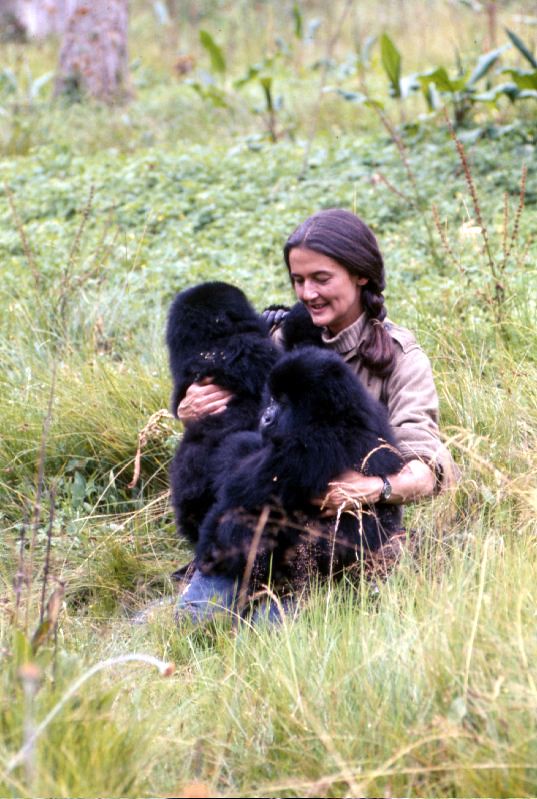Dian Fossey The American Primatologist
Born on January 16th, 1932, Dian Fossey was an American anthropologist, zoologist, and primatologist who spent more than 18 years studying mountain gorillas.
around the globe. Born to Kathryn and George in San Francisco, California, she was dubbed the most primatologist.
When she was six years old, her parents split, and her mother remarried Richard Price, a businessman who tortured her so severely that he would not let her eat at the same table as her.
Dian Fossey struggled with insecurity and turned to animals as a means of acceptance because she didn’t have any emotional support from her stepfather.
Throughout her life, she remained in love with her first pet goldfish. Louis Leakey urged her to work as an anthropologist in Rwanda’s Volcanoes National Park, where she continued to study mountain gorillas.
All of the study on the gorillas at the Karisoke study Center is included in her book, “Gorillas in the Mist.”
The movie “Gorillas in the Mist” was based on the book’s narrative.
Under the direction of her stepfather, Dian Fossey attended Lowell High School before enrolling in a business course at the College of Marin.
At the age of 19, she spent a summer on a ranch in Montana, where she rekindled her passion for animals and enrolled in a California pre-veterinary school.
Dian wanted to work with animals professionally, even though she wanted to fulfill her stepfather’s dream by attending business school.
In order to support herself as an adult, she began working as a white-faced clerk in a factory, performing laboratory and clerking duties.
Despite her love in animals, Fossey ended up becoming a therapist.
Dian chose to travel to Africa on her own in 1963 after hearing tales and seeing photos from a friend who had been there a year earlier. She borrowed money for three years and saved some money from her full-year wage.
She began her voyage by making a few stops in Kenya, Tanzania, the Congo, and Zimbabwe, little realizing that the trip would completely alter the course of her life. Dian encountered archeologist Louis Leakey at Tanzania’s Olduvai Gorge, who informed her that they required a study on chimpanzees.
She met Goddall at Bombe Stream study Center en route to Congo.
Goddall watched her conduct study on chimps and subsequently assisted her in obtaining a work permit in Virunga National Park.
Dian Fossey decided to go back to Africa to conduct research on gorillas after her trip.
Dian established the Karisoke Research Center on September 24, 1967, in the rainforest camp tucked away between the volcanoes in Ruhengeri.
The initial letters of Mount Karisimbi, which overlooked her camp from the south, and the last letters of Mount Bisoke, which climbed to the north behind the camp, were combined to form the name of the research facility.The people called her Nyiramacibiri, which translates to “The woman who lives alone on the mountain.”
Before the mountain gorillas vanished, she made the decision to take care of them. She could teach everyone about the virungas’ mountain gorillas.
Dain’s research on the Karisoke Gorillas took a long time because they were aware of poaching. Not only were the surroundings around the Karisoke chilly, muddy, and gloomy, but the researchers who came to the area had to cut the paths to get through the dense grass.
By reporting poachers, Dian fought for the gorillas in Rwanda; several gorillas, including Digit Dian’s favorite, Macho the female, and Kwili, were slain.
Fossey could sleep with a pistol close to her bed even though she was always aware that her life was in danger.
Surprisingly, though, she was slain by her enemies in her cabin; she died as a warrior who defended this endangered animals.
She was murdered in 1985 and passed away before realizing that she had cleared the path for the mountain gorillas to return to life. Her studies established the groundwork for both the ecotourism sector and the conservation of mountain gorillas.

